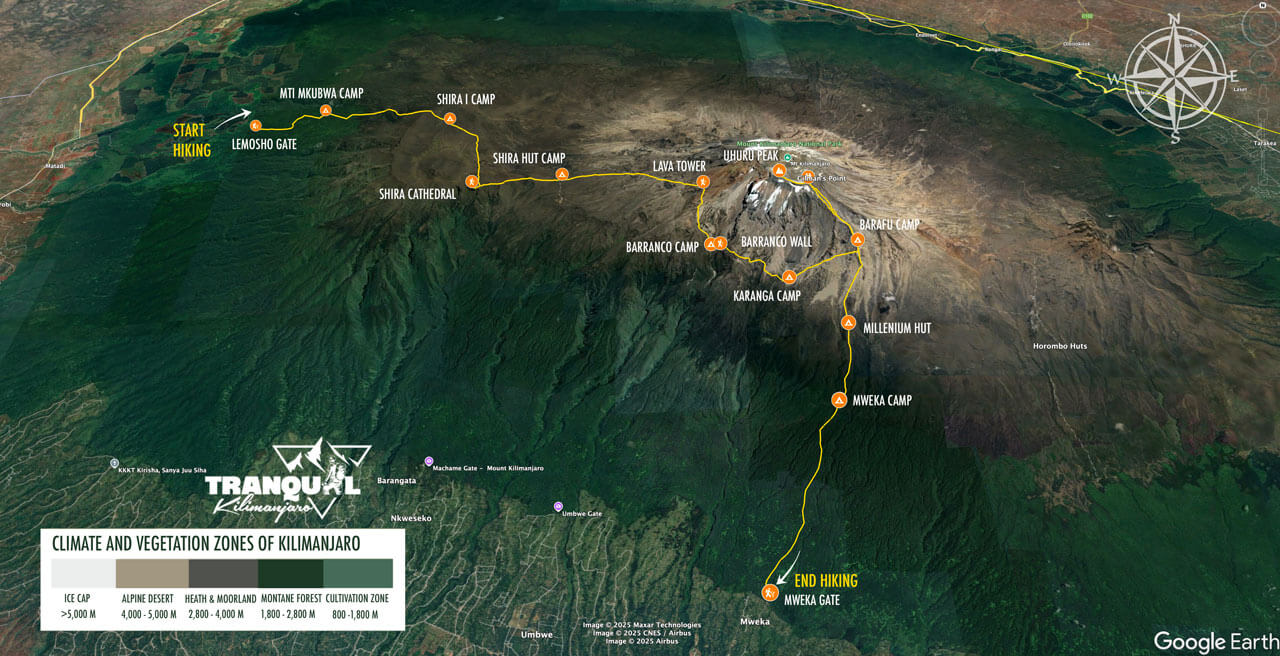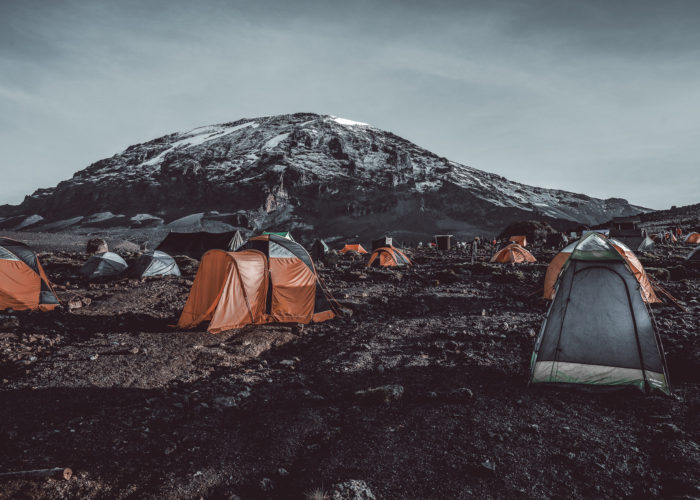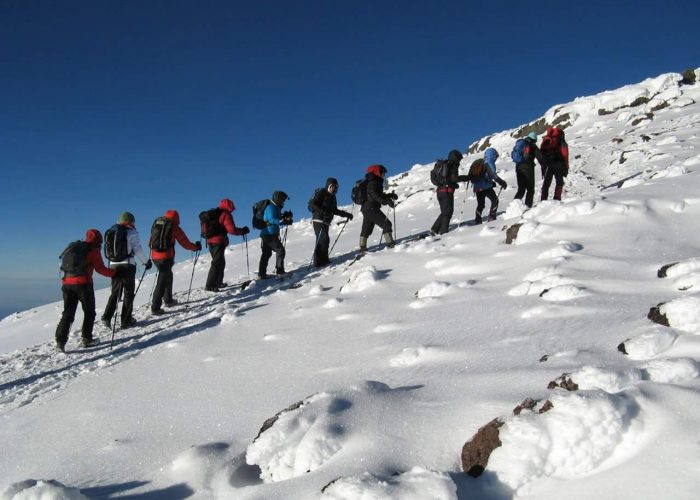Where will you sleep along the Lemosho Route?
The Lemosho Route is favoured for its remote start and excellent acclimatisation opportunities. Climbers sleep in tents throughout. The first night is typically at Mti Mkubwa Camp (2,820m), followed by Shira Camp 1 (3,500m) and Shira Camp 2 (3,850m). Some itineraries include a night at Moir Hut (4,150m), though this is less common and typically involves tents. The route then proceeds to Barranco Camp (3,900m), Karanga Camp (3,960m), and Barafu Base Camp (4,670m) before the summit attempt. Descent is via Millennium Camp (3,820m) or Mweka Camp (3,100m). All accommodations are in tents, with porters setting up sturdy, 4 season tents and providing sleeping mats.
Lemosho Route Reviews
Below are some of the Lemosho Route reviews from some of the clients that climbed Mount Kilimanjaro with us using the Lemosho Route.
The 8 Days Lemosho route was easier than we thought. After searching on google for a reliable Mount Kilimanjaro tour company, we came across, Tranquil Kilimanjaro. The reservations team worked with us to put together a climbing tour for the 7 of us. From the moment they picked us up at Kilimanjaro International Airport, everything went smoothly. The guides and porters were amazing and friendly. The hardest part of our Kilimanjaro challenge must be the summit night but not as hard as we imagined. We are thankful to Tranquil Kilimanjaro for their great support in conquering Mount Kilimanjaro. P.S Drink more water, eat energy-giving foods and rest easy!
Eléa Binoche – Paris, France
What will I eat when trekking the Lemosho Route?
When trekking the Lemosho Route, you’ll enjoy full board service, with experienced cooks preparing three hot meals daily, plus snacks and beverages. The meals are carefully planned to provide the energy and nutrients needed for high-altitude trekking, balancing carbohydrates, proteins, and fats. We recommend informing us of any dietary restrictions in advance, as we can accommodate vegetarian and vegan diets. For more details, see our sample meal plan and menu here.
Breakfast
Start your day with a hearty breakfast to fuel your trek. Typical offerings include:
- Porridge with milk
- Boiled or fried eggs
- Bread or toast with spreads like butter, jam, or peanut butter
- Fresh fruit such as bananas or oranges
- Hot beverages like tea, coffee, or hot chocolate
Lunch
Lunch is a mix of portable and nutritious options to keep you going. Expect:
- Sandwiches with fillings like meat, cheese, or egg
- Fresh fruit
- Sliced vegetables
- Sometimes macaroni with meat sauce
- On certain days, a hot lunch may be prepared at a designated stop
Dinner
Dinner is a hot, filling meal designed to replenish your energy after a day of trekking. It usually includes:
- Stews or curries with meat
- Rice or pasta
- Grilled meats
- Vegetables
- Bread or chapati as an accompaniment
Energy Snacks
Throughout the day, you’ll have access to snacks to maintain your energy levels during hikes. These include:
- Nuts (e.g., peanuts, almonds)
- Dried fruits (e.g., apricots, raisins)
- Chocolate bars
- Cookies
- Popcorn
- Energy bars
Vegetarian and Vegan Diets
We can accommodate vegetarian and vegan diets if notified in advance.
- Vegetarian options might include tofu scramble, cheese sandwiches, and lentil curries.
- Vegan options could feature plant-based meals like hummus wraps, vegan chilli, and overnight oats with plant-based milk.
For more information on vegetarian diets, please see here (#).
This food plan ensures you’re well-nourished and energised for the stunning and challenging journey up the Lemosho Route! More about vegetarian meals.
What makes Lemosho so unique, and why choose this route?
The Lemosho Route is celebrated for its scenic beauty and lower foot traffic, making it a favourite for those seeking a more secluded experience. Starting on the western side, it spans about 70 km and typically takes 7-8 days, offering excellent acclimatisation opportunities. Its uniqueness lies in traversing the expansive and beautiful Shira Plateau, providing panoramic views and a chance to spot wildlife, before joining the Machame Route. The longer duration increases costs but significantly boosts summit success rates. This route is ideal for climbers prioritising both scenery and acclimatisation.




























